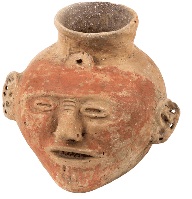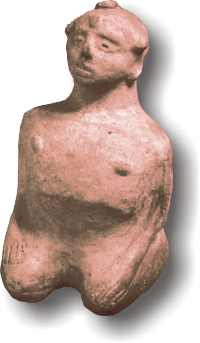
The investigated contexts were situated at the margin of a large village
that was more than 99% destroyed by erosion along the riverbank. The historically-famous
cemeteries had washed away in the early 1900s, and the residential area
of the village was destroyed not long thereafter. In addition to lateral
erosion, the highest remnants of the site had been truncated vertically,
so that the only features remaining on high ground were the bottoms of
pits and postholes. Any palisade walls that might have been present in
this area would have been scoured off years ago. Low-lying cultural deposits
in two areas -- within a deep swale and at the shore of the former lake
-- were preserved by thick caps of historic alluvium. Riverbank profiles
and block excavations documented sealed Mississippian strata. Both the
swale midden and the lakeshore midden were situated at the site's eastern
edge.


Because the Bone Bank assemblages are early within the Caborn-Welborn phase, they provide significant data sets for understanding regional temporal variation in plant use, ceramic styles, and fabrics. They further help distinguish Caborn-Welborn from earlier Mississippian sites with respect to plant use and fabric structures.
The results of the rescue investigations are an important complement
to the large collection of artifacts from Bone Bank's mortuary component
that is curated at the National Museum of the American Indian.
These materials, together with the records of the rescu investigations,
will soon be the only surviving testaments to one of the main villages
of the Caborn-Welborn phase.
Two years after backfilling the southernmost rescue excavation block, the river had cut into that area of the site.